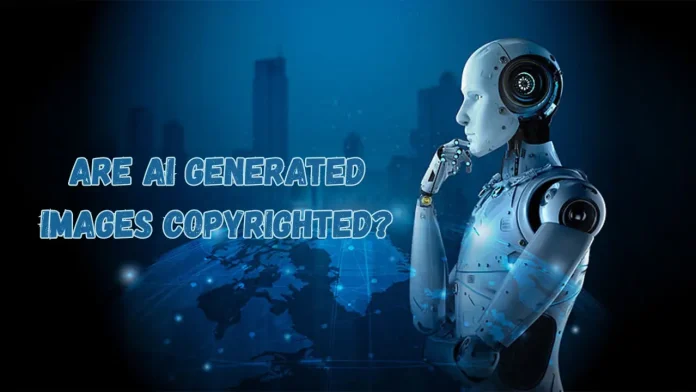Have you ever wondered if the stunning AI-generated images you see online are protected by copyright? As AI tools become more advanced, the line between human and machine creation is blurring. Whether you’re an artist, content creator, or just curious, understanding copyright in AI-generated art is essential. Let’s dive in and unravel this complex topic.
What Are AI-Generated Images?
Definition and Examples
AI-generated images are pictures created with the help of artificial intelligence. Unlike traditional art, these images don’t rely solely on human handcrafting. Instead, AI algorithms produce visuals based on data patterns. For example, tools like DALL·E, MidJourney, and Stable Diffusion can turn text prompts into highly detailed images.
Popular AI Image Generators
Some of the most widely used AI image generators include:
- DALL·E by OpenAI
- MidJourney for creative artistic styles
- Stable Diffusion for high-resolution outputs
These tools can create anything from realistic portraits to fantasy landscapes, raising questions about copyright and ownership.
How AI Images Are Created
Machine Learning and Neural Networks
AI models learn from large datasets of existing images. Neural networks analyze patterns in these images, enabling the AI to generate new ones. Think of it as teaching a robot to paint by showing it millions of paintings.
Training Data Sources
The training data usually comes from publicly available images, licensed databases, or scraped internet content. The choice of data affects the AI’s output and introduces legal complexities.
Understanding Copyright Laws
What is Copyright?
Copyright is a legal protection for original works of authorship, including art, music, and literature. It gives creators exclusive rights to reproduce, distribute, and display their work.
Traditional Copyright Principles
Traditionally, copyright requires human authorship. The work must be original and fixed in a tangible medium. This human element becomes crucial when considering AI-generated content.
AI and Copyright Law
Can AI Own Copyright?
Currently, AI itself cannot hold copyright. Copyright laws in most countries recognize only human creators. That means an AI-generated image cannot technically be copyrighted in the AI’s name.
Legal Perspectives Worldwide
United States
The U.S. Copyright Office clearly states that works produced by AI without human authorship are not eligible for copyright. Only humans who contribute creativity through prompts or edits can claim copyright.
European Union
EU copyright law also emphasizes human creation. AI-generated works may be protected if a human provides significant creative input, but this area is still evolving.
Other Countries
Countries like the UK, Australia, and Japan have nuanced approaches. Some allow limited protection if human intervention is evident. However, most laws are still catching up with technology.
Ownership of AI-Generated Images
Role of the Human Creator
If you guide the AI with specific instructions, your input may qualify as human authorship. For example, creating a unique prompt and refining the output could make you the copyright owner.
Input Prompts vs. Output
Simply pressing “generate” without meaningful input might not grant you ownership. Courts often evaluate the level of human creativity involved.
Fair Use and AI Images
How Fair Use Applies
Some AI-generated images may fall under fair use if used for commentary, criticism, or education. This allows limited use without permission from original creators.
Limitations of Fair Use
Fair use is not a blanket protection. Using AI images commercially or in ways that replace the original market can still lead to legal issues.
Commercial Use of AI Images
Selling AI-Generated Art
Selling AI art is possible, but copyright considerations are crucial. If you have human authorship, you can sell and license your work. Otherwise, legal risks remain.
Licensing Considerations
Always check the AI tool’s terms of service. Some platforms restrict commercial use or require attribution. Following licensing rules avoids potential disputes.
Ethical Considerations
Using AI Without Plagiarism
Even if copyright law allows certain uses, ethics matter. Avoid passing AI-generated content as fully human-made when it heavily relies on existing work.
Respecting Original Artists
Many AI images are trained on copyrighted works. Giving credit or avoiding direct copying is a way to respect the original creators.
Practical Tips for Creators
Protecting Your Work
- Document your creative process
- Keep prompt versions and edits
- Use platforms that provide commercial rights
Using AI Safely
- Avoid using copyrighted source material without permission
- Stay updated on legal changes
- Combine AI output with human creativity for stronger claims
Common Misconceptions
Myths About AI Copyright
- AI-generated images are automatically copyrighted — False
- Anyone can freely use AI art — Not always
- AI art is completely original — Depends on training data
The Future of AI and Copyright
Emerging Legal Changes
Lawmakers are exploring ways to adapt copyright laws for AI-generated content. Expect regulations that clarify ownership, licensing, and liability.
Predictions for the Next Decade
AI will become more autonomous, but human creativity will remain central to copyright. Future laws may define thresholds for AI contribution and joint ownership.
Case Studies
Real-Life Examples of Legal Disputes
- Thaler v. US Copyright Office: A case where an AI-created image was denied copyright because no human authorship was involved.
- AI Art Platforms: Some platforms now grant users commercial rights if they contribute significantly to the creative process.
Conclusion
AI-generated images are reshaping art and copyright law. While AI itself cannot hold copyright, humans who contribute creatively can claim ownership. Understanding legal frameworks, ethical use, and practical strategies is essential for creators in this evolving landscape. As AI technology grows, staying informed is the key to safely and successfully using AI in your work.
Also Read: How AI is Bad for the Environment

